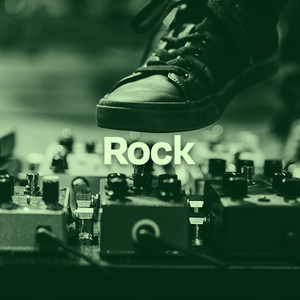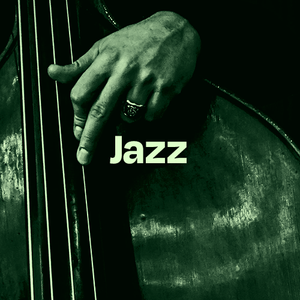If you've ever browsed through a record store or started building your vinyl collection, you’ve probably come across the term LP. But what is an LP vinyl record, and how does it differ from an EP? Let’s dive into everything you need to know.
LP stands for Long Play. An LP vinyl record is a full-length album, usually 12 inches in size, that spins at 33 ⅓ revolutions per minute (RPM) — often referred to as the 33 record size.
Thanks to its slower speed and larger surface area, an LP can hold around 20 to 30 minutes of music per side, making it the perfect format for albums that tell a complete story from start to finish.
Today, when people talk about vinyl albums, they’re almost always referring to LPs — a format that beautifully showcases how vinyl records work to bring music to life. An LP is a great way to showcase an artist's full body of work and it gives them space to move beyond singles, allowing them to create a cohesive album that unfolds across the record.
EP vs LP: What's the Difference?
When exploring vinyl, you'll often hear about EPs too. So how do EPs and LPs compare?
|
Feature |
EP (Extended Play) |
LP (Long Play) |
|
Tracks |
3–5 songs |
8+ songs |
|
Runtime |
10–25 minutes |
30–60 minutes |
|
Size |
Often 7" or 10" |
Usually 12" |
|
Purpose |
Teaser, new material, experimentation |
Full album, complete artistic statement |
In summary:
-
EPs are shorter — perfect for quick showcases.
-
LPs are full albums — meant for deep, immersive listening.
If you're planning your collection, knowing how to care for your vinyl properly, from cleaning a vinyl record to handling it correctly, makes all the difference in how long they last.
Why LP & EPs Still Matter Today
Despite the rise of digital streaming, LPs and EPs have made a powerful comeback. There’s something timeless about placing a record on a turntable, dropping the needle, and hearing that warm analogue sound unfold. Both formats offer a tangible, nostalgic experience that playlists simply can't replicate.
While LPs invite you into a full album journey, EPs deliver a shorter, focused snapshot of an artist's creativity — perfect for discovering new sounds or enjoying fresh releases between albums.
To protect that rich listening experience, it's important to think about storing a vinyl record properly. Good storage keeps your LPs and EPs safe from dust, warping, and scratches — all common causes of playback issues.
If you ever notice your records skipping or jumping, it could be an early sign of
vinyl record skipping, usually caused by dust, dirt, or even subtle warping. Usually with proper care and storage, warped or vinyl skipping can be avoided.
Find Your Perfect Vinyl Record at The Record Hub
At The Record Hub, our passion for vinyl shines through a collection focused entirely on LPs and EPs. We carefully curate our range to bring you the very best in full-length albums and standout EP releases — celebrating music in its purest, most timeless form.
Whether you're spinning a classic LP or discovering a new favourite EP, there’s nothing quite like the sound of vinyl to bring music to life.
Shop your favourite LPs and EPs now at
The Record Hub,
Frequently Asked Questions on LP Records
What size record is a 33?
A 33 record — also called a 33 ⅓ RPM record — is typically 12 inches in diameter.
This size became standard for LP vinyl records because it offers enough space for full-length albums while maintaining excellent sound quality.
What are the small vinyl records called?
Small vinyl records are often referred to as 45s or singles.
These are typically 7 inches in size and spin at 45 RPM, making them perfect for one or two songs per side.
How many songs are on an LP?
An LP usually contains 8 to 12 songs, depending on the artist, genre, and the average length of each track.
This format gives artists enough space to create a full, flowing album experience.
When should you replace your turntable needle?
Knowing when to replace the needle on a record player is key to preserving both sound quality and the life of your vinyl.
Elliptical stylus: Replace after about 300–500 hours.
Conical stylus: Replace after around 150–300 hours.
Signs it’s time? Skipping, distortion, or an overly scratchy sound.









